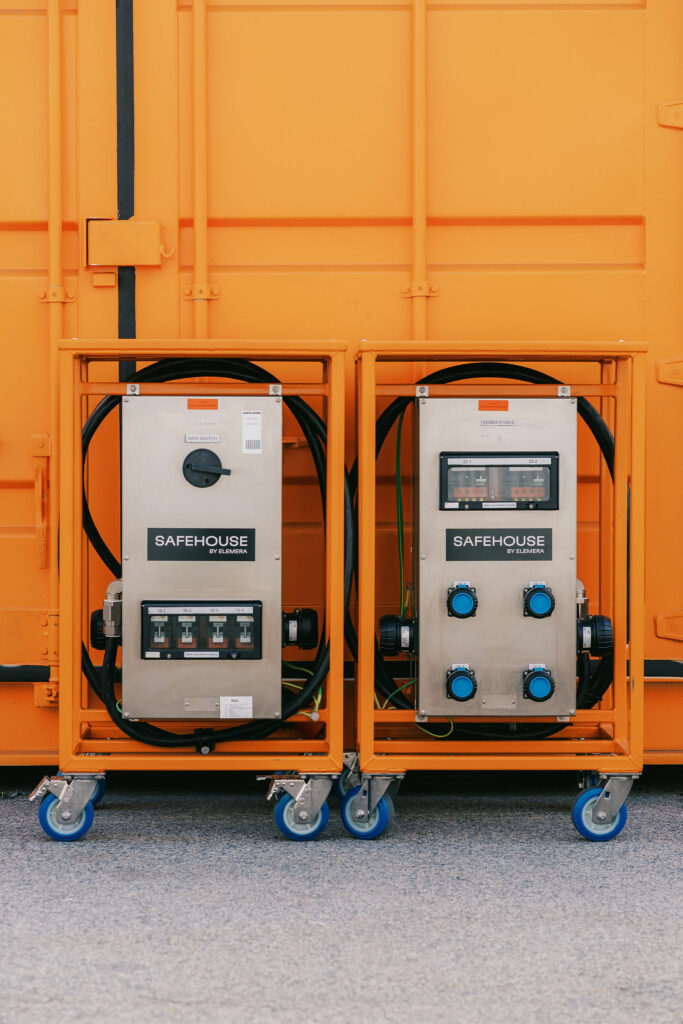The Roar Solutions PDFs
The Roar Solutions PDFs
Blog Article
Facts About Roar Solutions Revealed
Table of ContentsRoar Solutions Can Be Fun For EveryoneWhat Does Roar Solutions Do?Roar Solutions Things To Know Before You Buy
In such an environment a fire or explosion is feasible when 3 basic conditions are satisfied. This is typically described as the "harmful area" or "combustion" triangular. In order to secure installments from a potential surge a technique of analysing and identifying a possibly dangerous area is needed. The purpose of this is to make sure the appropriate choice and installation of tools to ultimately prevent a surge and to guarantee safety of life.
(https://urlscan.io/result/8b06a2f1-9edb-4076-8512-31003b1bcc3a/)
No tools should be set up where the surface area temperature level of the devices is better than the ignition temperature level of the offered hazard. Below are some common dust dangerous and their minimum ignition temperature. Coal Dust 380C 225C Polythene 420C (melts) Methyl Cellulose 420C 320C Starch 460C 435C Flour 490C 340C Sugar 490C 460C Grain Dust 510C 300C Phenolic Resin 530C > 450C Aluminium 590C > 450C PVC 700C > 450C Residue 810C 570C The likelihood of the hazard existing in a concentration high enough to cause an ignition will vary from area to area.
In order to classify this danger a setup is split into locations of threat depending upon the quantity of time the hazardous is present. These areas are referred to as Areas. For gases and vapours and dusts and fibres there are 3 zones. Area 0 Area 20 A harmful environment is very most likely to be present and may exist for long periods of time (> 1000 hours per year) or perhaps continually Area 1 Zone 21 A hazardous atmosphere is possible yet not likely to be present for extended periods of time (> 10 450 C [842 F] A category of T6 suggests the minimum ignition temperature level is > 85 C [185 F] Unsafe area electrical equipment perhaps developed for use in greater ambient temperatures. This would certainly suggested on the score plate e.g. EExe II C T3 Ta + 60C( This means at 60C ambient T3 will certainly not be exceeded) T1 T1, T2, T3, T4, T5, T6 T2 T2, T3, T4, T5, T6 T3 T3, T4, T5, T6 T4 T4, T5, T6 T5 T5, T6 T6 T6 A T Class score of T1 suggests the maximum surface area temperature produced by the instrument at 40 C is 450 C. Presuming the associated T Course and Temperature level ranking for the tools are ideal for the area, you can constantly utilize a tool with a much more stringent Department rating than needed for the location. There isn't a clear solution to this question unfortunately. It actually does depend on the kind of devices and what repair work need to be executed. Devices with details test treatments that can not be carried out in the area in order to achieve/maintain third event rating. Must come back to the manufacturing facility if it is before the devices's solution. Area Repair Service By Authorised Personnel: Challenging testing might not be required however certain procedures might require to be complied with in order for the tools to maintain its 3rd party ranking. Authorised personnel need to be used to perform the work correctly Repair service have to be a like for like substitute. New component should be taken into consideration as a straight replacement needing no special testing of the tools after the repair is complete. Each piece of equipment with a harmful score need to be evaluated separately. These are described at a high degree listed below, but also for even more detailed info, please refer directly to the guidelines.
Roar Solutions Fundamentals Explained
The tools register is a detailed data source of equipment records that includes a minimum collection of areas to identify each product's place, technical criteria, Ex lover category, age, and ecological information. The proportion of Comprehensive to Close inspections will be established by the Devices Risk, which is analyzed based on ignition danger (the possibility of a resource of ignition versus the chance of a combustible environment )and the harmful location category
( Zone 0Area 1, or 2). Implementing a robust Risk-Based Inspection( RBI )method is important for making sure compliance and security in managing Electrical Equipment in Hazardous Areas( EEHA).
Roar Solutions Fundamentals Explained

In regards to explosive threat, a hazardous location is an atmosphere in which an explosive atmosphere is present (or might be expected to be existing) in amounts that call for special precautions for the More Bonuses building and construction, setup and use of tools. eeha certificate. In this write-up we check out the challenges dealt with in the workplace, the danger control measures, and the called for proficiencies to function securely
It is a consequence of modern-day life that we produce, save or take care of a range of gases or fluids that are deemed combustible, and a range of dirts that are regarded combustible. These materials can, in specific problems, develop eruptive environments and these can have major and heartbreaking repercussions. The majority of us recognize with the fire triangle eliminate any kind of one of the three aspects and the fire can not take place, but what does this mean in the context of unsafe areas? When damaging this down right into its simplest terms it is basically: a mix of a particular amount of launch or leak of a particular material or product, mixing with ambient oxygen, and the existence of a resource of ignition.
In a lot of circumstances, we can do little concerning the degrees of oxygen airborne, but we can have substantial influence on resources of ignition, for instance electric tools. Harmful areas are recorded on the unsafe location classification illustration and are identified on-site by the triangular "EX" sign. Here, amongst various other vital details, areas are split into 3 kinds relying on the threat, the probability and duration that an explosive atmosphere will certainly exist; Area 0 or 20 is considered the most dangerous and Area 2 or 22 is regarded the least.
Report this page